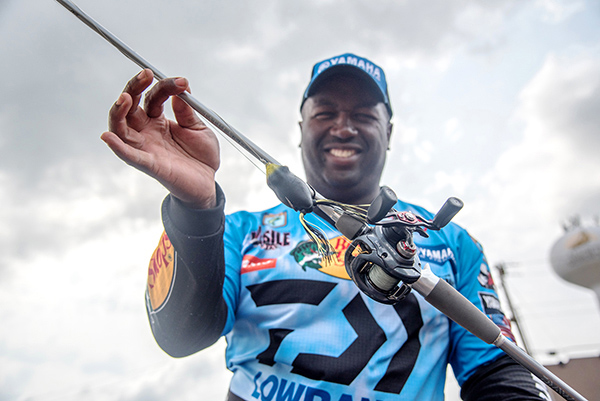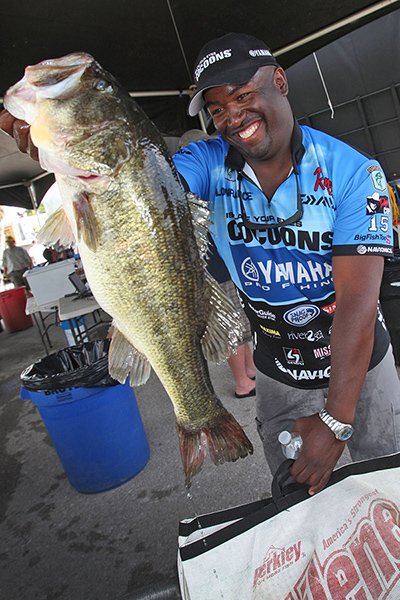Yamaha Report
 Ish Monroe with a Frog
Ish Monroe with a Frog
When Yamaha Pro Ish Monroe won the Bassmaster Elite tournament on the upper Mississippi River this past June by fishing his favorite floating frog lure over shallow vegetation, the victory validated two of his primary beliefs about river fishing.
First, bass in rivers nearly always concentrate in specific areas more than they do in lakes; and secondly, water movement and habitat put bass in those specific areas.
“Most rivers have fishable water from one end to the other, so you have to move around more to find the fish,” he explains. “At the same time, most, but not all rivers have an abundance of suitable habitat where fish might be.
“As a fisherman is moving and searching for those concentrations, he/she also has to be fine-tuning his/her selection process, and one way to do this is studying how water movement relates to that habitat.”
Flowing water pushes forage into protected habitat areas where they can escape the current, continues the Yamaha Pro, and bass move with them for the same reasons. The flowing water carries bluegills, shad, crawfish, and other foods right to the bass so they don’t have to move around as much to feed.
“Fishermen should be looking not only for cover like logs, rocks, and other objects that block the flow of water,” says Monroe, “but also how much cover is actually available for bass to use. Current is not just on the surface, either. It can continue for several feet under the surface, or even all the way to the bottom, depending on how strong it is.
“This is why long points, rock jetties, and thicker vegetation like hydrilla, milfoil, and even lily pads in coves and cuts can be bass magnets.”
 Areas Can Be Important in Summer River Fishing
Areas Can Be Important in Summer River Fishing
On the upper Mississippi, Monroe found his fish concentration in Pool 8 where the pros launched. His key cover was heavy duckweed, which is why a floating frog worked so well. Due to heavy rains as well as a broken dam upriver, water in the river was rising quickly, so he had plenty of current. His best bass had moved into a small, shallow pond practically hidden behind a wall of reeds and surrounded by a levee.
“I had actually seen that pond from a previous Bassmaster® Elite tournament,” noted Monroe, “but it was really muddy then so I never fished it. This time, with the river rising, I realized I could get into the area, and when I did, I caught 17 pounds, 4 ounces of bass, my best day of the tournament.
“Of course, I went back the next day, and fortunately, the fish were still biting. The spot had everything bass needed, including plenty of cover and all the forage the higher water had washed in.”
Monroe recommends three lures for most summer river fishing, including a spinnerbait, a jig, and some type of topwater lure like a frog, popper, or buzz bait. What’s important is finding the proper water conditions for each of these lures.
“Spinnerbaits are one of the best river lures because they’re so versatile,” he explains. “They can be fished from the surface down to whatever depth you want to work them. The same is true with jigs, which imitate different types of forage. You can swim them around cover or crawl them along the bottom and catch bass with either presentation.
“With topwaters, I prefer a frog because it catches larger bass, but other types of surface lures will also catch quality fish, especially buzz baits if you can work them slow enough. In this tournament, I caught the majority of my 65 pounds of bass on a frog.
“The lure choices are pretty easy,” concludes the Yamaha Pro. “What’s more important is moving and searching for concentrations of bass, and that means watching water movement and studying the available cover. If you do this, I know you’ll eventually find them.”





